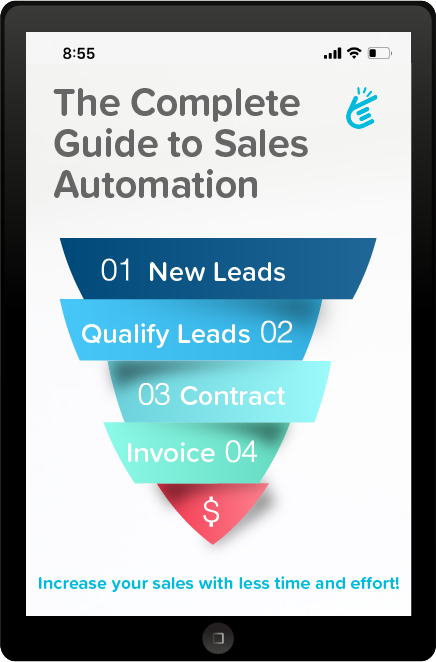How To Build an Automated Sales Funnel
Why is a sales funnel important to your business?
According to Business.com, creating the right sales funnel for your business can help automate your marketing processes, scale your sales income, and grow your business. This guide will introduce you to the sales funnel concept and help you apply it to your business.
What is a sales funnel?
A sales funnel is the step-by-step process a prospect follows to become your customer. It’s called a funnel because the process begins with a large number of prospects at the top who are aware of your business and its products or services.
Some of those prospects funnel downward as a result of your marketing efforts, and a fraction of those prospects become customers when they reach the bottom of the funnel.
For example, here’s how a sales funnel for a caterer might work:
People see an Instagram post featuring a caterer’s work with a call to action that says, “Book today and save 10%!”. This is the top of the funnel.
A percentage of people will click the link and look at the catering packages offered on their website. This is the next step in the funnel.
One customer inquires through the website and submits a package. This is the step in the funnel when the customer either completes the inquiry or leaves your website without inquiring.
Once the customer inquires through your intake form, that triggers an automated welcome email and invites them to schedule a virtual consultation. This step is known as the sales call. At this stage, you have the best chance to close the deal.
Next, always assume the client wants to book, so send them a “How to book” email. Most caterers require a signed contract and a 50% retainer to secure the booking. That information should be included in the email.
Once the contract is signed, and the deposit is paid, the client is booked. Great job, the funnel is now complete! However, you still need to collect the full payment before the service date and may want to have other interactions to ensure all of the details are correct. Those steps can all be automated through a workflow.
What is a workflow?
Workflow is the series of activities that are necessary to complete a task. Each step in a workflow has a specific step before and after, except for the first and last steps. The most common type of workflow is a linear workflow. In a linear workflow, an outside event usually initiates the first step. This could be a form on a website or an invoice getting paid.
For example, here’s how a workflow may look for a caterer once the client has booked their services.
A thank you email is triggered upon the signed contract and paid deposit.
Once the event is 30 days out, an email is triggered requesting the client review all of their final details with a link to a form to provide additional details like wardrobe, employee meals, and instructions for loading in.
Once the client completes the form, a task is scheduled to staff the event & start production.
When the event is 2 weeks out, an email is sent with the final invoice and a link to make payment.
After the event ends, a thank you email is sent with a link to leave a review.
30 days after the event date, the project is archived.
How to create a workflow.
Workflows exist in organizations even if they're not well-defined or managed to any degree. However, workflows that are not planned or managed often have operational inefficiencies.
On the other hand, workflows that are thoughtfully created and well managed are efficient. They are also less prone to errors and likely to improve over time.
Creating a workflow involves multiple steps, which can be depicted in a workflow diagram as a sequence of steps or written as a list of required actions.
Creating a process-improving workflow requires the following series of tasks:
Identify the start and endpoint of the process.
List or map out each step required to move from the start point to the endpoint.
Assess whether these tasks must happen in a specific order and, if so, list or map them accordingly.
Determine and document the resources and roles within the organization that are required to complete each step. Add required workflow rules or business process descriptions.
Execute workflow.
The benefits of automation.
Automating your sales frees up your time to focus on growing your business and provides a better customer experience. For example, suppose you currently have a manual sales process, and your competitors are automated. In that case, it may take you a day or two to reply to inquiries and send proposals versus your competitors, who communicate instantly. To whom do you think the client is going to want to work? By building an automated sales funnel & workflows, you can program every action and email that needs to be executed to book the client.
Try e-cinch free!
Automate your business today





